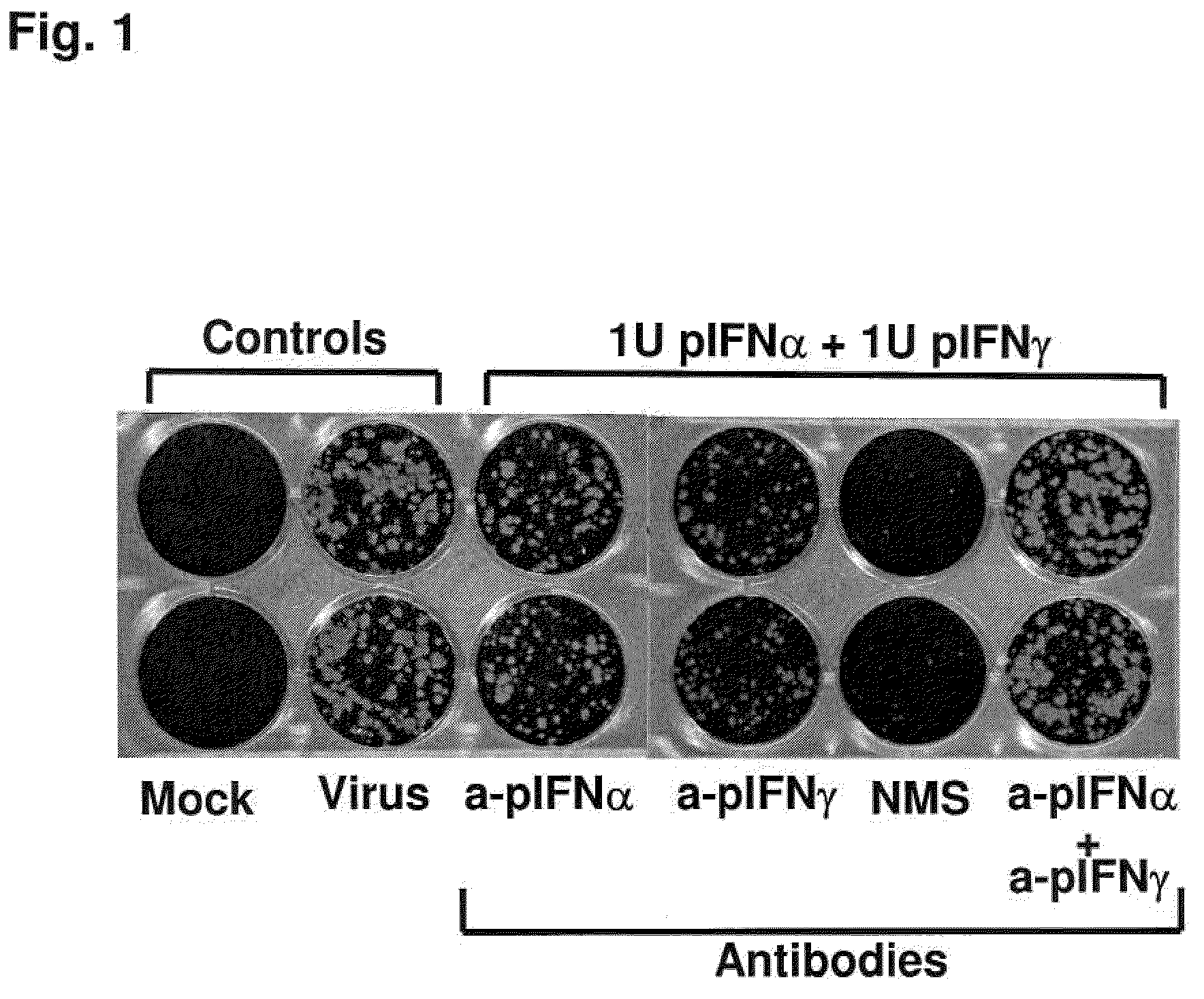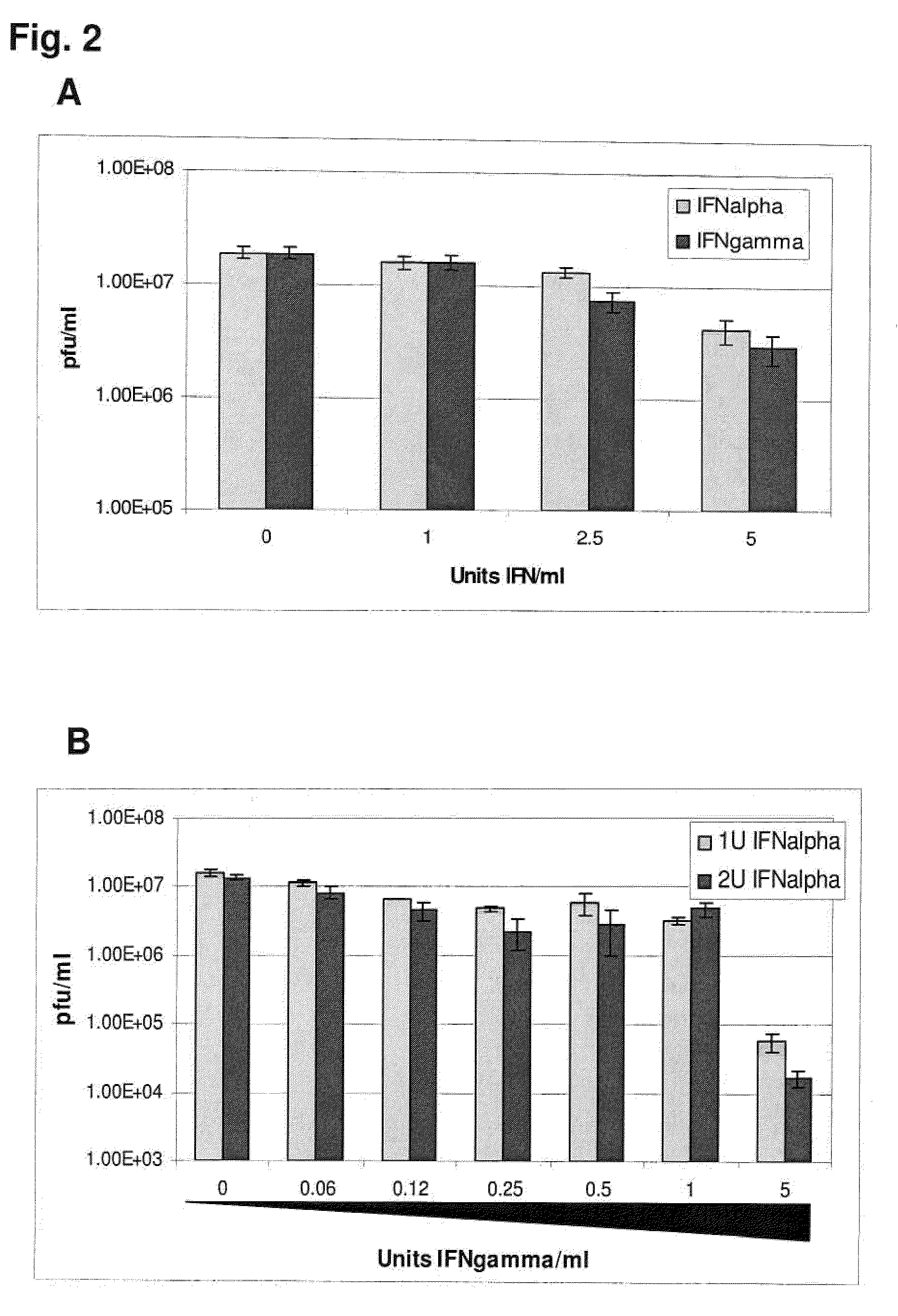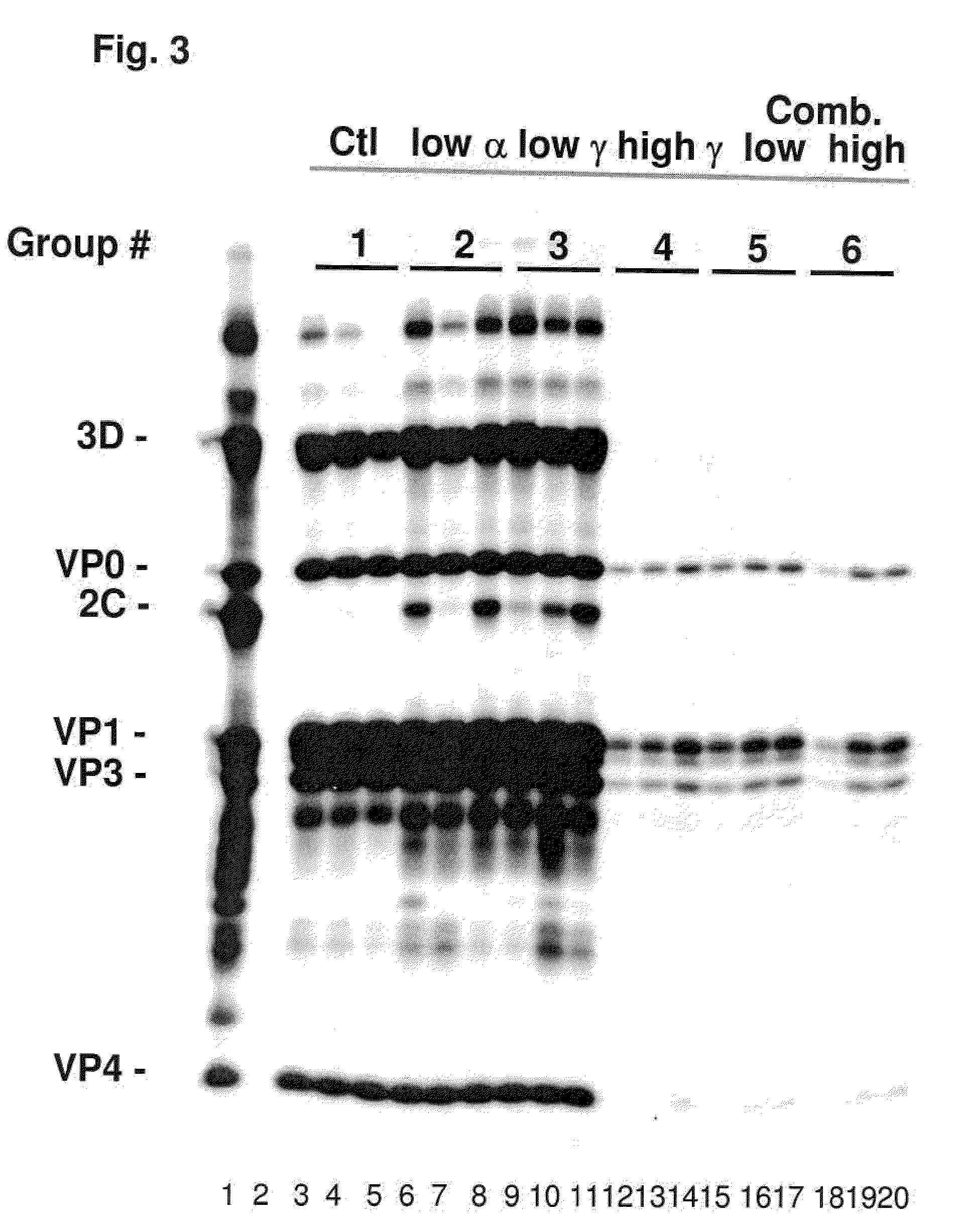Enhanced antiviral activity against foot and mouth disease
a technology of antiviral activity and antiviral drug, which is applied in the direction of antibody medical ingredients, dsdna viruses, peptide/protein ingredients, etc., can solve the problems of ineffectiveness, inability to completely eliminate fmd outbreaks, and inability to fully eliminate the current vaccin
- Summary
- Abstract
- Description
- Claims
- Application Information
AI Technical Summary
Benefits of technology
Problems solved by technology
Method used
Image
Examples
example 1
Viruses and Cell Cultures
[0070]Human 293 cells were used to generate and grow recombinant Ad5 viruses and to determine virus titer (Graham et al., Moraes et al. 2002, supra). Baby hamster kidney cells (BHK-21, clone 13) were used to measure FMDV titers in plaque assays. IBRS-2 (swine kidney) cells were used to measure antiviral activity in plasma from inoculated animals by a plaque-reduction assay (Chinsangaram et al. 2001, supra). The recombinant viruses Ad5-CI-pIFN-α, Ad5-CI-pIFN-β, and Ad5-CI-pIFN-γ were constructed as described below, while Ad5-VSV glycoprotein (Ad5-VSVG) was described previously (Moraes et al., 2001, supra). FMDV serotype A24 (strain Cruzeiro, Brazil, 1955, provided by A. Tanuri, University of Rio de Janeiro) was isolated from vesicular lesions of an infected bovine. The 50% pig infectious dose (PID50) was determined by standard protocols (Burrows, supra).
example 2
Ad5 Construction and Expression of pIFN-α, β, and γ Proteins
[0071]To optimize expression of recombinant proteins, we genetically engineered new Ad5 vectors. pAd5-Blue, which contains the cytomegalovirus (CMV) promoter / enhancer for control of foreign gene expression and a functional LacZ gene fragment (Moraes et al. 2001, supra) was digested with ClaI and XbaI to remove the Amp and LacZ genes and the Renilla luciferase gene (pRL-TK; Promega, Madison, Wis.) was inserted, creating pAd5-RL. A unique BstBI site was added directly upstream of the CMV promoter / enhancer of pAd5-RL by site-directed mutagenesis, and this vector was then digested with BstBI / ClaI to remove the CMV promoter / enhancer region. The CMV promoter / enhancer, intron, and T7 promoter region from the vector pCI (Promega) was PCR amplified with primers containing BstBI and ClaI sites at their 5′ and 3′ ends, respectively, and inserted into BstBI- and ClaI-digested pAd5-RL to form pAd5-CI-RL. The bovine growth hormone poly(A...
example 3
Antiviral Effect of pIFN-γ
[0076]The biological activity of IFN-γ was determined by a plaque reduction assay in IBRS-2 cells (Chinsangaram et al., 2003, supra). Briefly, IBRS-2 cells were incubated with dilutions of supernatants containing pIFN-α, pIFN-β, or pIFN-γ or combinations of two IFNs. After 24 h, supernatants were removed, and the cells were infected for 1 h with approximately 100 PFU of FMDV serotype A12 and overlaid with gum tragacanth. Plaques were visualized 24 h later by being stained with crystal violet (Chinsangaram et al. 2001, 2003, supra). Antiviral activity was reported as the reciprocal of the highest supernatant dilution that resulted in a 50% reduction in the number of plaques relative to the number of plaques in untreated infected cells. Serial dilutions of plasma samples, starting at a 1:25, were incubated with IBRS-2 cells for 24 h, and the cells were subsequently infected and treated as described above. To neutralize the antiviral activity, pIFN-α monoclona...
PUM
| Property | Measurement | Unit |
|---|---|---|
| pH | aaaaa | aaaaa |
| temperature | aaaaa | aaaaa |
| Tm | aaaaa | aaaaa |
Abstract
Description
Claims
Application Information
 Login to View More
Login to View More - R&D
- Intellectual Property
- Life Sciences
- Materials
- Tech Scout
- Unparalleled Data Quality
- Higher Quality Content
- 60% Fewer Hallucinations
Browse by: Latest US Patents, China's latest patents, Technical Efficacy Thesaurus, Application Domain, Technology Topic, Popular Technical Reports.
© 2025 PatSnap. All rights reserved.Legal|Privacy policy|Modern Slavery Act Transparency Statement|Sitemap|About US| Contact US: help@patsnap.com



